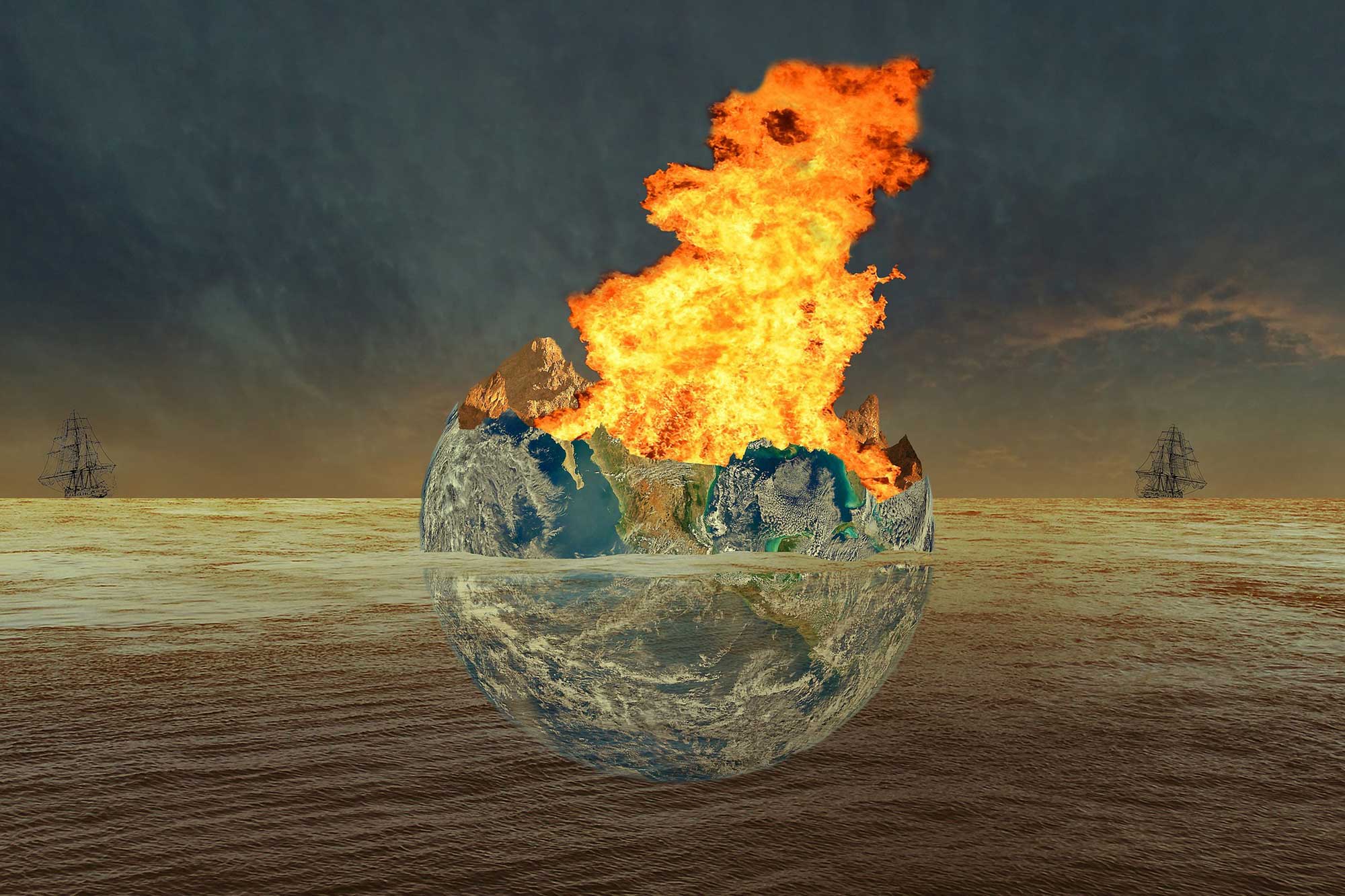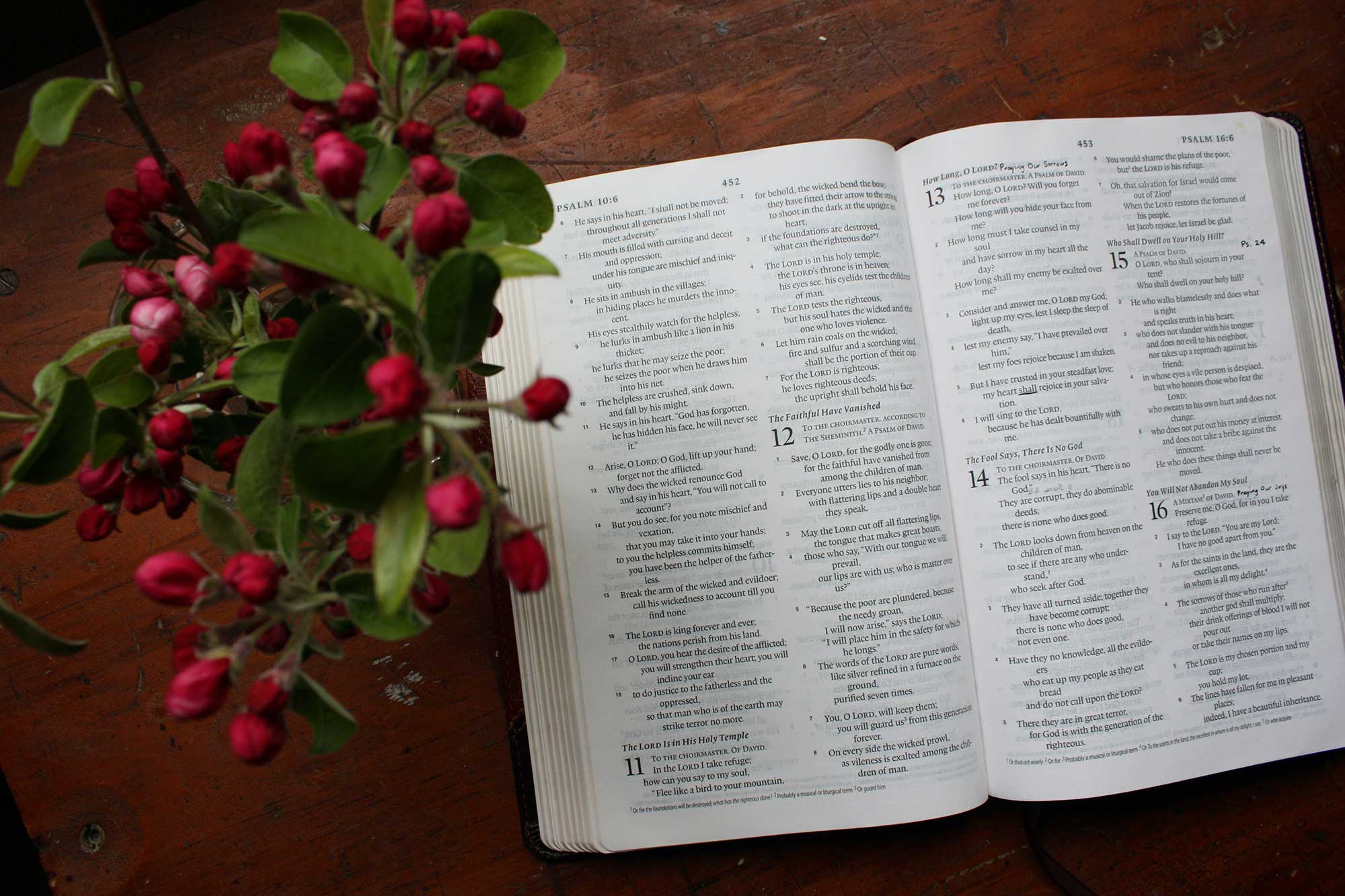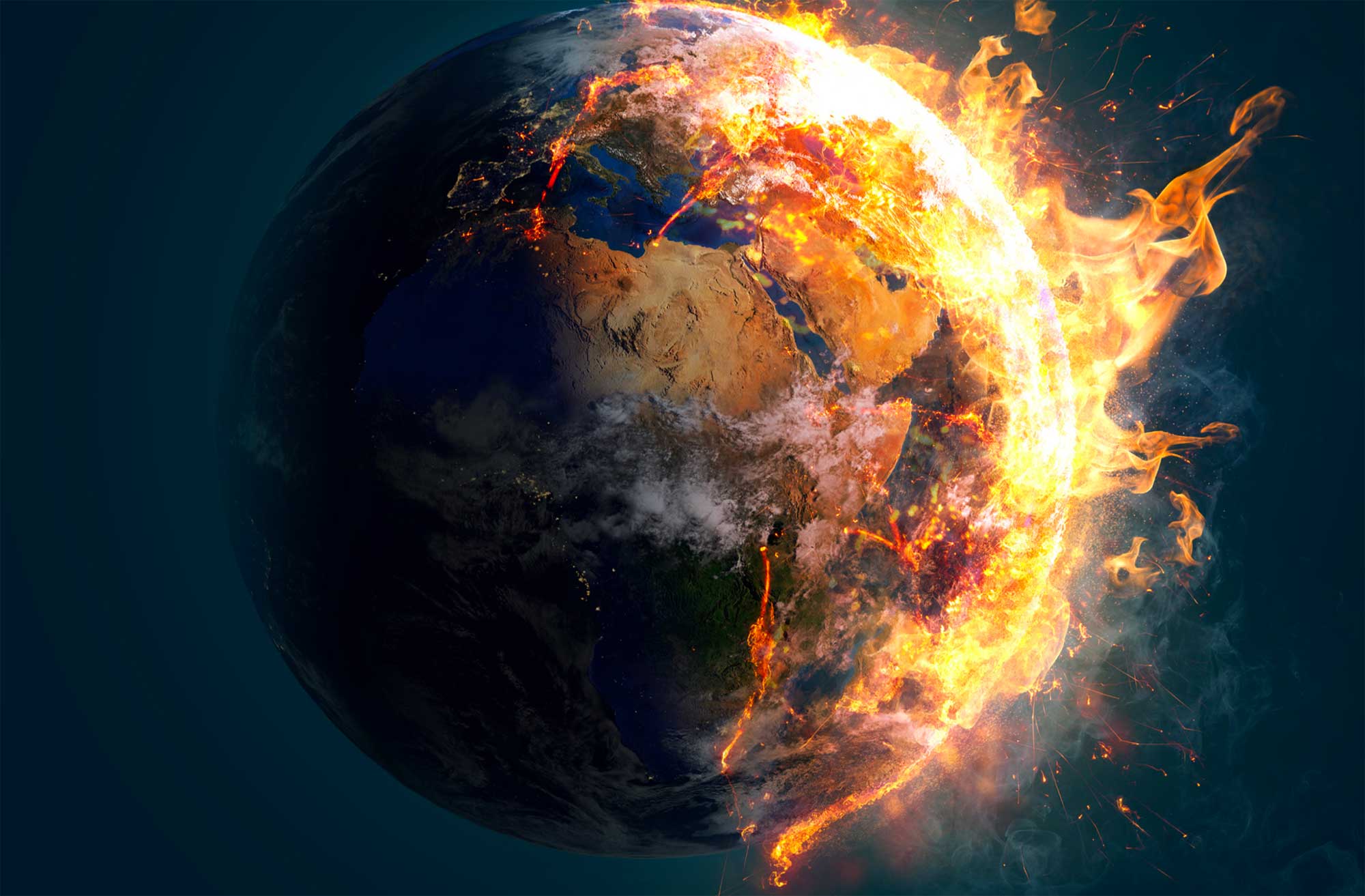
Revelation Hope – 1,000 Years of
Peace and the Final Judgement
Looking at the End-Time Resurrections
Read Revelation 20:1-10
Here the Bible talks about two resurrections. Between these events there is a time period called “1,000 years.”
In verses 5 and 6 those who come to life in the first resurrection are spoken of as being “blessed and holy.”
They will be priests of God and live and reign with Christ for 1,000 years.
In contrast, verse 5 also indicates that the rest of the dead do not come to life until the 1,000 years has ended.
Jesus also spoke about two types of resurrections in John 5:28-29:
“Do not be amazed at this, for a time is coming when all who are in their graves will hear his voice and come out—those who have done good will rise to live, and those who have done evil will rise to be condemned.”
These verses declare those who are part of the first resurrection as being blessed and holy.
They will live and reign 1,000 years with Christ.
This resurrection, at the beginning of the 1,000 years, is obviously the resurrection to life for those who “have done good.”
At the end of verse 5 it says “the rest of dead did not come to life until 1,000 years were ended.”
This must mean the second resurrection is of those who have “done evil.”
They rise to be condemned in the judgment. We will see this towards the end of the chapter.
It is easier for us to study this chapter as we focus on events around both resurrections.
Let’s look at the first resurrection. As we do so we will find how many other parts of Scripture now seem to fit together.
Throughout this chapter we are forced to move backwards and forwards, just as we have seen John doing in earlier chapters.
He moves forward, reviews and continues forward once again.
These verses declare those who are part of the first resurrection as being blessed and holy.

The Big Picture
As we develop this chapter we will:
• Have a clearer understanding of what happens after the return of Jesus to this world.
• Understand more clearly what happens after death.
• Gain a greater appreciation of the vindication of God as revealed through the judgment.
• Discover the final fate of the devil and his angels.
• Explore how it is that God intends to restore this world to its original purpose following Creation.

Events Surrounding the First Resurrection
Many Bible writers have written about this epic event; the return of Jesus Christ.
Paul described it in 1 Thessalonians 4:15-18.
He declares that the dead in Christ will rise first.
This helps us answer the question: “Where are the dead?”
The clear answer is: they are in the grave. They are not in heaven.
They are not in hell.
In verse 15, Paul describes the dead as being asleep.
Sleep is the usual Bible word to describe death.
Jesus used this word in John 11:11-14 to describe the death of Lazarus.
After four days of death, He called Lazarus from the tomb. In this story, it is clear that during the time before his resurrection Lazarus was not in heaven or hell but in the tomb.
This is a wonderful hope that Christians have . We shall see our loved ones again.. Notice how Paul states this great hope again in 1 Corinthians 15:51-55.
He tells us that the this mortal shall put on immortality.
To be mortal means we can die; to be immortal means we will not die.
What the Bible Says About Death
God’s original plan for the human race was to live on this planet forever and not die. But God had warned Adam and Eve that if they ate of the forbidden fruit they would die (see Genesis 2:17).
The teaching that death is not really death comes out in Genesis 3:4. It is the devil’s lie.
A correct understanding of the biblical teaching on this subject is important for the following reasons:
• Spirits of devils will work miracles to deceive people at the end time.• We only have life in Jesus—apart from Him we have nothing.
We cannot make sense of the 1,000 years in Revelation 20 if we do not have a clear understanding of why there is a need for any resurrection.
If the righteous are already in heaven and the wicked are burning in hell, why does God bring them out of the grave?

Where are the Dead?
The Bible teaches the dead are in the grave.
It does not support the concept of an independent, immortal soul.
In the New Testament the term “Hades” is used to refer to the grave.
In verse 13 where it says the dead come out of “Hades” it simply means they come from the grave, which is the abode of the dead.
Contrary to the presumption of many, the Bible teaches that all who have died—both good and bad—remain in the grave until they take part in one or the other of the two resurrections.
When Jesus died, we are told He also went to Hades, the grave (see Acts 2:31).
After the first resurrection, there will be a heaven for God’s people.
We will see this in the next session when we look at Revelation 21-22.
At the conclusion of the 1,000 years, when the remaining dead come to life again, there will be a hell in the sense of a punishment for sin.
We will see this at the end of Revelation 20.
In Mark 9:43-48, Jesus spoke of hell as being a real place. When He did this, He used the Greek word Gehenna to describe hell.
Hinnom is the Hebrew equivalent word. His listeners would associate this word with the valley of Hinnom, outside the walls of Jerusalem.
It was a place where Israel once offered their children to the fiery god, Molech.
Later, when they repented for sacrificing children, they made the place a rubbish dump.
As such, fire was always burning in the dump, night and day.
The bodies of dead animals were cast into this fire.
Most of the animals’ bodies were burnt up, and what was left on the outer limits of the fires was devoured by worms.
When Jesus spoke about death, His original audience understood what He was speaking about.
The point is that there was total destruction of the bodies cast into the fire.
We will see more of this concept when we come to the destruction of the wicked at the end of the 1,000 years.

“The 1,000 Years”
At the beginning of the 1,000 years, we have the first resurrection when the dead are raised to meet Christ in the air.
Immediately after this, the living saints are changed.
Both the dead and the living who trust in Jesus meet Him and His angels in the air (see 1 Thessalonians 4:17; see also Matthew 24:30,31).
When Christ returns He does not touch the earth but takes His people away from the earth.
The Bible says Jesus is preparing a place for us now in His Father’s house.
We saw in the previous session how John used the Hebrew wedding to illustrate the relationship Christ has with His church.
The bride was to wait for the coming of the bridegroom.
He was preparing a place for them to live and when he was ready he would come for his bride and they would go to his father’s house where they would have a wedding feast.
Keep this in mind as we read John 14:1-3.
God’s people spend the 1,000 years in the heavenly mansions Christ has prepared for them.
In 1 Peter 1:4, Peter declares that through the resurrection of Christ from the dead there is “an inheritance that can never perish, spoil or fade—kept in heaven for you.
What are God’s people doing in the heavenly mansions for 1,000 years?
Revelation 20:4-6 states that they live and reign with Christ for 1,000 years.
Among them are the end-time believers who did not worship the beast or his image.
Some of them had lost their lives, but now they are alive again and they function as priests and kings.
In the Old Testament, the concept of being both a king and a judge was common.
This concept of God’s people exercising judgement makes sense if we recognise that God has been accused by Satan of being in the wrong.
In the end we will be fully satisfied that God has always been right in all His ways and dealings (see Romans 14:10-12).
Through the ages the devil has raised questions which must be answered.
Now it will be plain for all to see that behind all that has happened nothing has been left to chance.
The providence of God has been at work on their behalf.
This text portrays the saints reviewing the events of history and seeing beyond a shadow of a doubt that God has consistently done the right thing.
That conviction is important for the health of the universe and everyone in it.
Revelation 7:9-17 pictures a great multitude standing before the throne of God.
The language used to describe them at this time is the language of the Feast of Tabernacles. The multitude sing songs of praise to God because they can see more clearly His care over their lives.
When Jesus returns He gathers up His people and takes them home to be with Him in the heavenly mansions He has prepared for them in His Father’s house.
But what of those who are not His people?
What happens to them at His return?
In Revelation’s prophecies we have seen their destruction described in many ways:
• Some are destroyed by the bowl related plagues.
• Some are destroyed by the secular powers turning against the harlot to destroy her when they realise they have been deceived.
• Some are destroyed by the great 5 upheavals in nature accompanying the
return of Jesus.
• Others are destroyed at His coming. This is likened to a grape harvest being put through the wine press (see Revelation 14:20).
It is also likened to being killed with the sword coming out of the mouth of Christ (see Revelation 19:21).
All of the doubts charges and claims that originated with Lucifer will have been refuted. The universe and all creation will be secure in the love and care of our Heavenly Father.
“At the conclusion of the 1,000 year period there will be no question about the justice
and love of God.”

Events During the 1,000 Years
At the Second Coming, the earth is a mess.
The seven plagues have wreaked destruction. Nature has been turned upside down.
The earth is covered with the bodies of those who have been slain. The birds of the air feed upon the rotting corpses (see Revelation 19:21).
In Revelation 20:1-3, John sees an angel coming down from heaven with the key of the abyss and a great chain in his hand.
He takes hold of the dragon and throws the chained Satan into the abyss, locks it and seals it over him.
Obviously, this is figurative language as one could not bind Satan, who is a spirit being, with a chain.
The abyss is the dark prison where demonic forces are confined
(see Luke 8:31; 2 Peter 2:4).
Revelation 9:1, 2 shows that to unlock the abyss is to allow demonic forces to come out and operate.
However, here we have the earth itself being described as an abyss.

“The earth is at rest for 1,000 years.”
The Greek word is Abyssos.
The equivalent in Hebrew is Tehom, which is used in Genesis 1:2 to describe the earth as it was at the beginning of the Creation week.
Darkness was over the surface of the deep (Tehom).
Because of the chaos caused by the plagues and the destruction when Jesus returns, the earth is in a state of chaos—in some respects like the chaos before Creation.
The earth becomes a prison for Satan and his angels who are bound there to contemplate the destruction they have caused.
There is no-one left alive to torment or tempt. God’s people are in heaven living and reigning with Christ. The wicked are dead.
The earth is at rest for 1,000 years.
Meanwhile, in heaven, God’s people are judging the world as Paul states in 1 Corinthians 6:2.
They will be able to see how God gave opportunities to those who rejected His love and how He guided and cared for His people, even when it seemed He had deserted them.

Events at the Close of the Millennium
Read Revelation 20:7-15
Three events happen at the same time:
• The wicked are raised to life;
• Satan is released; and
• The Holy City descends (see Revelation 21:2, 10).
The Bible frequently writes of events topically rather than chronologically. Revelation 20 is dealing with the fate of Satan, his angels and the wicked.
On the other hand, Revelation 21 and 22 deal with the future home of God’s people in the new heaven and the new earth. That is why we have to go to the next chapter to find out how it is that the Holy City comes to the earth.
The fact that Satan is released from his prison simultaneously with the rest of the dead returning to life in Revelation 20:5 confirms that his “binding” experience is caused by having no-one to tempt.
This period comes to an end when the wicked are brought out of Hades at the time of the second resurrection (see Revelation 20:13).
Satan is released to deceive the nations again as he has in the past. The multitude come before the Holy City and surround it but fire comes down from God and destroys them.
The term “Gog and Magog” is used here to describe the enemies of God and His people.
It is a term used in Ezekiel 38 and 39 to describe how the enemies of Israel would come against God’s people in Palestine.
John reapplies it now as it will be fulfilled at the end of the 1,000 years when the wicked come against God’s people from throughout the ages.
As he often does, John goes back and repeats the scene in Revelation 20:11-15.
This time he gives us some further details.
The wicked dead are raised and come before the great white throne of God for judgment.
They are called to give account for the lives they have lived, the wrongs they have done and the way they have treated others.
Romans 14:10-12 says everyone will give account of themselves before God.
Revelation 11:18 states that the time has come for the judging of the dead and the rewarding of God’s people.
Romans 14:10-12 says everyone will give account of themselves before God.

There are three aspects of God’s judgment:
1. Before Christ comes and brings His reward with Him. This is witnessed by heavenly beings (see Daniel 7:9, 10, 21, 22), who can see the wisdom of God at work in accepting and rejecting people.
2. During the 1,000 years, the saints judge the world. They can see the wisdom of God and His fairness in accepting and rejecting—even in the things that happened in their own lives.
3. At the end of the 1,000 years, the wicked are called to account before the great white throne. Now they can see that their sentence is fair.
Before God pulls down the final curtain, every creature will declare that God is just and fair (see Romans 14:11). Never again does God need to tolerate evil and suffering.
It is now understood that happiness only comes when we are faithful to God in obeying His covenant.

“Jesus gave a view of how God feels about those who reject His mercy when He wept over Jerusalem (see Luke 19:41-44).”
Many of the songs of Revelation feature the theme of God’s justice and fairness
(see Revelation 15:3, 4; 16:5-7; 19:1-3).
An understanding of this gives meaning to many other subjects found in the Bible.
The wicked now stand before the judgment seat of God. They realise they are lost and it is their fault.
The saddest point is that the New Jerusalem could have been theirs for eternity, but they would not accept God’s offer of forgiveness.
Now they are to be destroyed in the lake of fire.
At that moment, every human being who has ever lived will be alive at the one time.
It is a strange act for God, who delights in mercy, to destroy the wicked.
Jesus gave a view of how God feels about those who reject His mercy when He wept over Jerusalem (see Luke 19:41-44).
At that moment, every human being who has ever lived will be alive at the one time.

It is a merciful act to destroy them, as they would never be happy in the New Jerusalem.
The things that make them happy are about to be destroyed and they would be miserable in the New Earth.
It is important to note that this fire does not burn without end. But it is understandable that some who read the Bible could think
this.
We will look at a few of the Scriptural expressions that have produced the teaching of eternal torment.
Sometimes this idea is caused because people reading the Bible have failed to take into account the idiom of biblical language.

Revelation 20:10 mentions the wicked being tormented day and night, forever and ever.
However, the Bible sometimes uses these terms in a more limited sense, actually meaning for as long as a person lives (see 1 Samuel 1:22, 28; Exodus 21:6).
Jeremiah 17:27 talks of Jerusalem being destroyed with unquenchable fire burning in its gates.
Jude 7 mentions Sodom and Gomorrah being destroyed with eternal fire.
There is no eternally burning hell now.
The lake of fire at the end of the 1,000 years is God’s punishment for sin.

A New Heaven and a New Earth
To think that God would punish them without end portrays God as a monster.
Because of this incorrect teaching, many have walked away from God as they could not reconcile such a belief with a loving God as revealed by Jesus.
The fire that destroys sin and sinners in a lake of fire does not burn forever.

We will see in Revelation 21 how God turns this lake of fire into a new heaven and a new earth.
Peter also confirms this in his epistle (see 2 Peter 3:10-13).
We have no indication from Scripture as to how long the fire burns except it will not burn without end.
Just imagine that great scene: standing before the judgment seat of God and knowing we are lost.